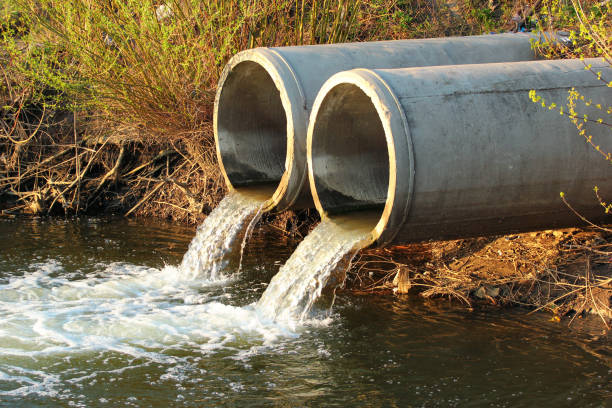Coronavirus disease 2019 (COVID-19) caused by severe acute respiratory syndrome coronavirus 2 (SARS-CoV-2) has emerged as the most important viral disease of zoonotic origin already directly affecting more than 141 million and causing more than 3 millions deaths as of April 19, 2021, according to WHO.
Real-time reverse transcription polymerase chain reaction (RT-PCR) is one of the most widely used laboratory methods for detection of COVID-19 because of its high sensitivity in exponentially amplifying RNA molecules. Therefore, most countries depend on doing RT-PCR on the general population to track and monitor the actual prevalence of SARS‐CoV‐2. However, this is not a practical surveillance approach for the general population over the long term or for a sustained period of time. Environmental microbiologists have investigated foodborne, waterborne, fecal-oral, or enteric viral pathogens such as poliovirus, hepatitis A virus, and norovirus from the sewage and used it as a public health surveillance tool, and more recently for tracking SARS-CoV-2.
Recent studies found that SARS-CoV-2 RNA could be detected in feces, leading to speculation that COVID-19 can be transmitted via the fecal-oral route. In Valencia, Spain, a team of scientists and engineers are accessing the sewage network as an attempt to figure out the next possible COVID-19 outbreaks. Haramoto and colleagues carried out the first environmental surveillance for COVID-19 in Japan. They detected SARS-CoV-2 RNA (2.4 × 103 copies/L) in secondary-treated wastewater. The noticeable remark is that SARS-CoV-2 RNA was detected in wastewater when there was a high number of COVID-19 cases, implying that SARS-CoV-2 wastewater surveillance may be considered to be an ideal surrogate for community cases.
In Spain, Randazzo and colleagues detected SARS‐CoV-2 RNA in samples taken when communicated cases in that area were only incipient. They also reported that the wastewater SARS‐CoV-2 RNA context markedly increased and anticipated the subsequent ascent in the number of declared cases. They proposed that SARS-CoV-2 was present in the community earlier than previously believed, suggesting that wastewater analysis is a cost‐effective and sensitive method for epidemiological surveillance of COVID‐19.
Medema and colleagues reported the first detection of SARS-CoV-2 in sewage in the Netherlands. They found that there is a positive correlation between the prevalence of COVID-19 in the community and the detection of SARS-CoV-2 in sewage, indicating that sewage surveillance could be a sensitive tool to monitor the circulation of SARS-CoV-2 in the population. In France, Wurtzer and colleagues reported that the increase in the SARS-CoV-2 genome units in raw wastewater perfectly followed the increase in human COVID-19 cases seen in specific areas.
Detection of SARS-CoV-2 in wastewater includes three main steps: concentration of wastewater samples, RNA extraction, and RT-PCR. Most of the previous studies used approximately 200 mL of wastewater. Different methods were used for viral concentration such as aluminum-driven flocculation, specific filters, or electronegative membrane-vortex (EMV) method. Then, RNA extraction kits or automatic RNA extractors were also used for RNA extraction. After extraction of RNA, the presence of SARS-CoV-2 was determined using various RT-PCR kits.
COVID-19 wastewater surveillance could help in making properly targeted shutdowns as well as reopening in heavily populated sectors that lack resources and facilities. This also could give a good sign and indication if COVID-19 cases are high or low in these specific areas. In conclusion, tracking of COVID-19 in wastewater could give a good picture of cases in specific or selected areas instead of doing RT-PCR on all populations in these geographic regions. COVID-19 sewage surveillance may be used as an early alarm, similar to the poliovirus sewage surveillance, which has been long used for this goal.

